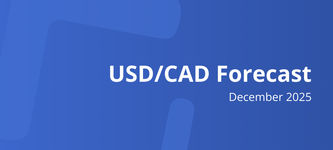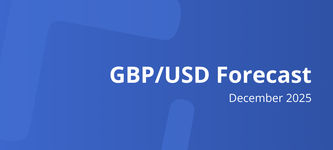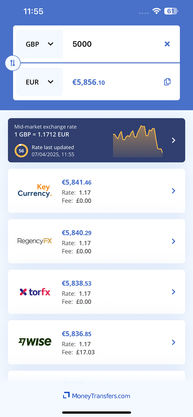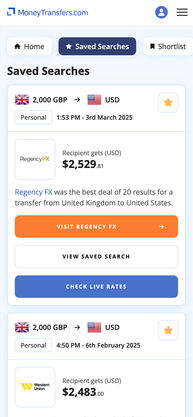USD to AUD Forecast - December 2025
If you're planning to send U.S. dollars (USD) to Australia this month, here’s a straightforward breakdown of what’s happening in the currency markets, and what it might mean for your transfer.
USD/AUD is currently trading at 1.492415
Search Now & Save On Your Transfer
What is likely to happen to USD/AUD in December 2025
AUD looks likely to stay firm in the coming month. Most signs point to USD to AUD drifting slightly lower, meaning weaker USD and stronger AUD. If you are sending USD to Australia, acting sooner may give you a more favorable rate.
USD to AUD: Where It Stands
Right now, USD to AUD is near the lower end of its recent range because the Australian dollar has been gaining strength. AUD has been supported by firmer commodity prices, improving confidence in the global economy, and expectations that Australia may keep interest rates higher for longer compared with the United States. As a result, one US dollar buys fewer Australian dollars than it did a few months ago.
What’s Driving USD to AUD?
Several key factors are pushing USD to AUD lower.
Central bank expectations: The US Federal Reserve is leaning toward cutting interest rates, while the Reserve Bank of Australia is signaling it may keep rates higher or even raise them later in 2025 or 2026. When a country offers higher interest rates, investors tend to move money there, lifting its currency.
Commodity strength: Australia benefits when global demand for iron ore and other commodities holds up, especially from China. Recent data suggests China is not slowing sharply, which helps the AUD.
Risk appetite: When investors feel more optimistic about global markets, they tend to move away from the US dollar and into currencies like the AUD that benefit from growth.
US uncertainty: Political noise around the Federal Reserve and the recent government shutdown issues have made the USD more unpredictable.
What Do the Charts Say?
Charts show the AUD in an improving uptrend against the USD. Key levels for USD to AUD suggest the USD is struggling to push higher. AUD strength becomes more likely if AUD/USD stays above the support zone at 0.6520 to 0.6550. Resistance for AUD/USD sits near 0.6650 and then 0.6700. If AUD/USD rises toward 0.6700, it means your US dollar will buy fewer Australian dollars.
What to Watch in December 2025
The main events that could move the exchange rate soon.
US inflation data: Softer numbers would increase the chance of Fed rate cuts and weaken the USD.
RBA meeting and speeches: Any hint of future rate hikes from the RBA would boost the AUD.
China economic data: Strong manufacturing or spending figures tend to support the AUD.
Global risk sentiment: If markets stay calm and upbeat, the AUD usually benefits.
Risks Ahead
A simple list of what could disrupt the current trend.
A sudden slowdown in China would push AUD lower.
Strong US data could delay Fed rate cuts, lifting the USD.
Any geopolitical shock may cause markets to rush into the USD as a safe haven.
If AUD/USD falls back below 0.6520, the technical outlook turns weaker.
What This Means If You’re Sending USD to AUD Abroad
Right now, the trend is leaning toward a stronger AUD in the next month. This means one US dollar may buy fewer Australian dollars as time goes on. If you need to send USD to Australia, you may get a better rate sooner rather than later. If you wait and the AUD keeps strengthening, you could end up receiving less on the Australian side.
Live USD to AUD exchange rates
Converting USD to AUD
If you are planning to send USD to Australia, you need to pick the right money transfer company to get the most AUD on the other end.
Depending on your needs, it's best to use one of the following companies in December:
Money transfer company | USD/AUD exchange rate | USD/AUD fee | USD/AUD transfer time | AUD received |
|---|---|---|---|---|
Wise (Best USD/AUD rate) | 1.4889 USD/AUD | 26.68 | same day | 10,382.37 |
Key Currency (Lowest Fee) | 1.4854 USD/AUD | 0 | minutes - 3 days | 10,397.58 |
MoneyGram (Overall cheapest) | 1.4593 USD/AUD | 490.00000000000006 | minutes - 24 hours | 9,500.11 |
Wise (Fastest Option) | 1.4889 USD/AUD | 26.68 | same day | 10,382.37 |
*Based on our data of $7,000 transfer from the USA to Australia in December 2025. For other amounts, please .
History of the USD to AUD pair
The US and Australia have had a friendly relationship and have always done trading with each other. In the past, the US dollar and the Australian pound were used for trading.
However, in February, Australia moved from the pound and introduced the Australian dollar, commonly known as the AUD.
The ISO standard for the Australian dollar and the US dollar is AUD/USD.
The USD/AUD pair has had its lows and downs over the years. Between 1980 and 2001, the pair jumped by 148% as it moved from a low of 0.8476 to a high of 2.10.
It then declined by ~56% from its highest level in 2001 to a low of 0.9101 in August 2011.
Since then, the pair has been in an overall upward trend. It has risen by about 15% in the past five years.
The Australian dollar is usually affected by a number of factors.
First, it is affected by the overall commodity prices since Australia is well-known for its vast natural resources, which include coal, copper, and iron ore.
Second, the Chinese economy plays a huge role in the Australian economy because of the vast volume of trade that happens between the two countries.
According to Lowy Institute, China buys more than two-thirds of all commodities that Australia produces.
Further, like other currency pairs, USD/AUD pair reacts to geopolitics and actions by the Reserve Bank of Australia (RBA) and the Federal Reserve (Fed).
| Date | 1 US Dollar in AUD |
|---|---|
| Dec 21, 2025 | 1.512882 AUD |
| Dec 22, 2025 | 1.501941 AUD |
| Dec 23, 2025 | 1.492203 AUD |
| Dec 24, 2025 | 1.491335 AUD |
| Dec 25, 2025 | 1.491400 AUD |
| Dec 26, 2025 | 1.488760 AUD |
| Dec 27, 2025 | 1.490535 AUD |
| Dec 28, 2025 | 1.489481 AUD |
| Dec 29, 2025 | 1.493685 AUD |
| Dec 30, 2025 | 1.492415 AUD |

Our handy, modern currency app lets you:
Instantly convert 25,000+ currency pairs
Compare live transfer deals
Get reviews & insights
Our app is free for mobiles and tablets, with no intrusive ads or in-app purchases.
Related Content




Contributors





